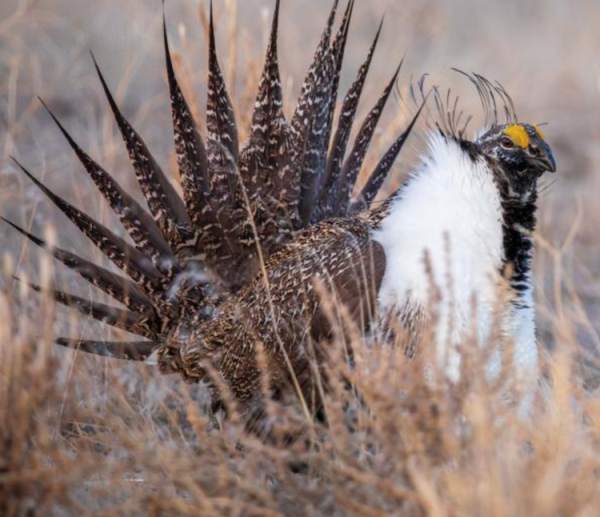
|
With the warmer weather and greener landscapes, April is one of the best months of the year to view sage-grouse on their leks in Wyoming.
The greater sage-grouse is the largest species of grouse in North America. Each spring male sage-grouse perform an elaborate sunrise display on communal breeding grounds known as leks. While sage-grouse require sagebrush landscapes to survive, leks are often located in open areas where the males can be better seen and heard by females.
“The dramatic display makes viewing sage-grouse a popular recreational activity during the spring across much of Wyoming,” said Nyssa Whitford, sage grouse biologist for the Wyoming Game and Fish Department. “This year’s conditions are mostly dry across the state. We may still receive spring storms so be vigilant, watch the weather and pick a string of dry, clear mornings for your lek visit this year.”
To guide your lek outings, Game and Fish launched the Sage-Grouse Lek Viewing Guide to take you to the best publicly-accessible viewing locations across Wyoming. The guide provides directions to each lek location.
There are courtesies to follow while witnessing the sage grouse’s early-morning rituals on accessible leks.
Game and Fish urges individuals when viewing to:
Whitford also advises being especially cautious with viewing activities in early-April when breeding activity usually peaks.
“Late-April is a good time to visit because most of the breeding is complete, but the males are still actively strutting. The weather is usually better, too,” she said.
Wyoming has a long history of sage-grouse conservation, and was the first state to implement a statewide conservation strategy for the species. Through partnerships with landowners, other state and federal agencies and conservation organizations, Game and Fish has worked to balance land use with conservation efforts and help protect and restore sage-grouse populations throughout the state. For more information on our conservation efforts, please visit our sage-grouse management page.